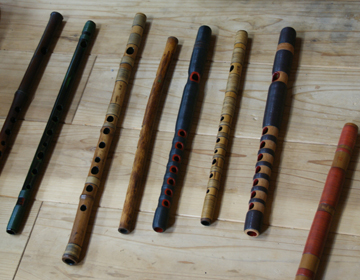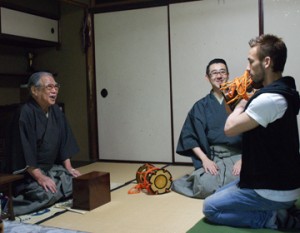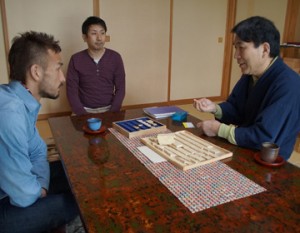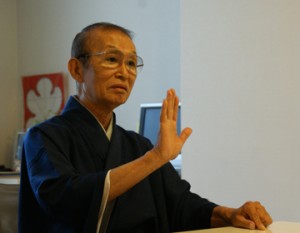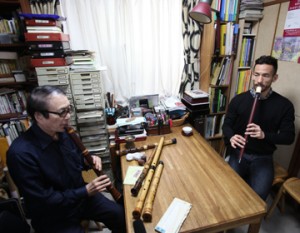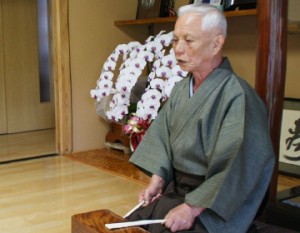A Japanese flute with a Western musical scale
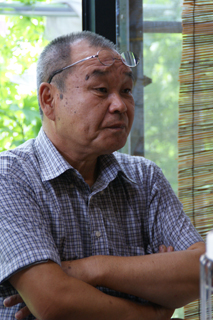
It is said that 90% of Japanese flutists as well as members of the traditional music entertainment group ”Kodo” of Sado Island use Ranjo’s flute. The secret to his popularity with first class musicians, is that the flute has a range that can accommodate various scenarios, and a tone that is a product of being selective about the material that is used.
Ranjo told us, ”The rhythm of the ”ohayashi” flutes from ancient times is specific to Japan, and does correspond to that of Western music. In short, the flute used for Kabuki or Noh has a scale specific to Japan.”
A flute with the unique Japanese scale is not suitable to Western music. But Ranjo changed the internal structure, made it correspond to the Western scale of ”Do Re Mi”, and created a flute which is also suitable for modern music.
”It made of Japanese bamboo. Yet it also plays the Western scale, so it can be used worldwide.”
As a child, Ranjo was attracted to the sound of flutes used at festivals. When he was in the 3rd or 4th grade, he was already making his own flutes.
”The local festival was not held for a long time, and I also was working in Yokohama for a while so I was away from home. When I returned to my hometown at 26, the festivals started again. So it was a ’good opportunity’ for me to participate with a flute that I made myself. The next thing I know, I was immersed in this world. (laugh)”
Creating a flute that performers desire
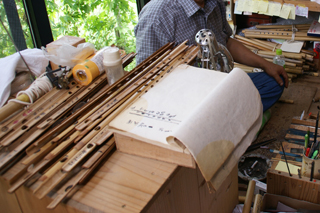
Surprisingly, Ranjo is a self taught flute maker.
”It used to be that only 1 out of a 100 flutes were considered a success. But that is not acceptable. All 100 should be successes.”
Ranjo says.
After thoroughly studying the structure of the flute, he figured out how to structurally create a good flute.
”In my case, it was important that I was self-taught. Over repeated trial and error, I learned from my mistakes. If you study under a teacher, you will only learn one way to do things.”
Because of Ranjo’s tenacious curiosity, he has been able to fulfill the needs of performers with different preferences or musicality.
Starting with ”what kind of sound will it make?”
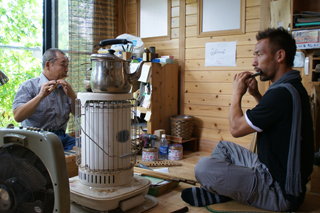
Nakata tried blowing into Ranjo’s flute.
On a previous occasion when Nakata had an opportunity to play a Japanese flute, it was difficult to make any sounds. But this time, with gentle guidance from Ranjo, he was able to make a sound.
”Athletes have good intuition.” Ranjo complimented.
Usually, a flute is made entirely of either Japanese timber bamboo or regular bamboo, but Nakata was curious and asked ”I wonder what kind of sound would be created with a flute made with half timber bamboo and half regular bamboo?”
”That’s a good idea. I’ll give it a try.”
Ranjo’s curiosity is sure to continue to play a large role from here forward.



